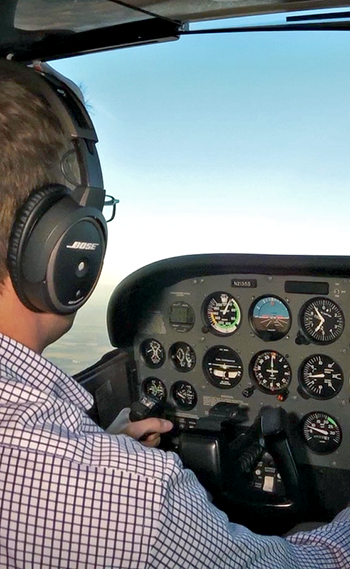Subscriber question:
"How can I overcome my fear of stalls?" — Kim T.
Spencer:
 “Stalls make many pilots uncomfortable. Much of that discomfort stems from inexperience and misunderstanding. So spending time mastering your aircraft at stall speed can be a huge confidence booster.
“Stalls make many pilots uncomfortable. Much of that discomfort stems from inexperience and misunderstanding. So spending time mastering your aircraft at stall speed can be a huge confidence booster.
My favorite exercise for this is the falling leaf maneuver. It involves keeping the airplane at stall speed while maintaining a steady heading and level wings. If you’ve never done the falling leaf before, bring an instructor along the first time.
You begin just like any intentional stall: Get to a safe altitude at cruise speed and trimmed for level flight. Reduce power to idle and maintain altitude by steadily increasing back pressure on the elevator. As you approach stall speed, neutralize the ailerons and begin using the rudder instead to control heading and keep the wings level. This requires a lot of rudder work. If the right wing drops, apply more left rudder, and vice versa. At first, it’ll feel like you’re dancing on the pedals – lots of quick adjustments – but with practice, the movements become more instinctive. Keep pulling until you reach the stall—your yoke or stick should end up against the aft stop—and hold it there throughout the maneuver.
You’ll notice the nose oscillating: rising into the stall, then dropping after the break to pick up speed, then rising again. These oscillations will start off large but become smaller with each cycle as the plane settles into a steady state.
A few key rules here: Avoid using ailerons. I know your brain is telling you just pick up the wing with aileron but DON’T do it! In a stalled condition, ailerons will likely do the opposite of what you want and can quickly flick you into a spin. Keeping them neutral takes discipline and feels wrong at first, but that’s the whole point of this exercise. Stay active on the rudder to maintain control and prevent a spin. And keep the yoke or stick fully aft until you’re ready to recover. Set a limit of 1000 feet maximum of altitude loss or a hard deck of 2000 feet AGL, whichever comes first.
Recover just like any stall: Lower the nose, apply full power, and return to level flight. Then climb back up and repeat. It’s a great way to build skill, sharpen control, and develop a real sense of confidence in slow flight.”
If you’d like another exercise to build your skill and comfort with the edge of stall, check out this exercise from the Pilot Exercise Program.
Have you experinced a fear of stalls?

